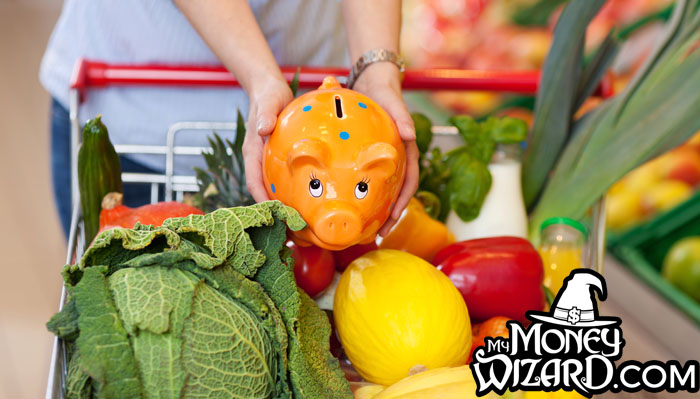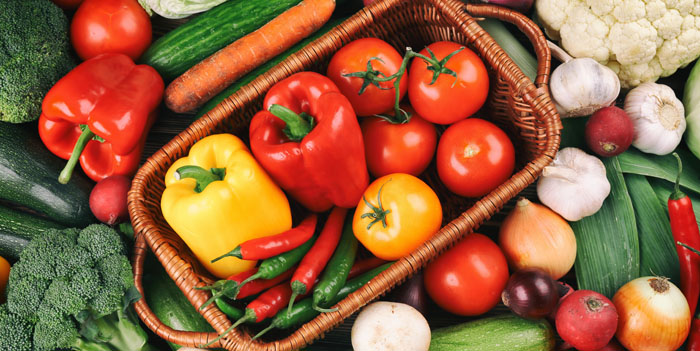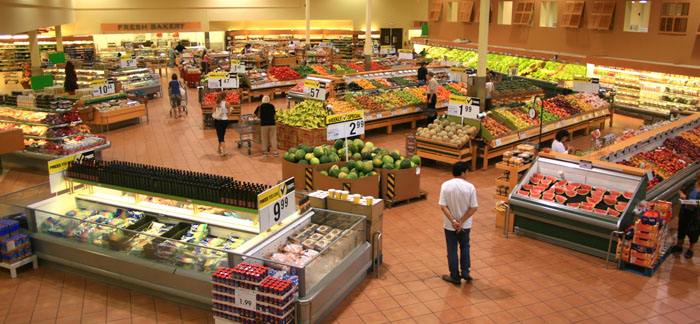

A few months ago, I shared how I spend less than $35 a week on groceries. Since then, it’s become one of the most popular posts I’ve ever written.
While I hope that seeing the final shopping list and cost was valuable, as I wrote the post, I quickly realized there’s way too many subtle hacks going into that final number for just one article.
So today, we’ll zoom out and look at the underlying strategies that anyone can use to slash their grocery spending.
If you implement even some of these 15 tips, you can definitely cut next week’s grocery bill down to less than $5 a day.
1. No gourmet grocery stores until you’re a millionaire
Around here, the most popular version of a gourmet grocery store is a local co-op called Mississippi Market. And their prices are ASTRONOMICAL.
Every once in a while I’ll step inside one of these just for a good laugh. $8 per pack of mushrooms? Chicken breast at $9 a pound? Steak at $19 a pound??
Seriously, wtf…
If you’re already a millionaire, feel free to spend thousands of dollars a month to chase the potential health benefits.
For the rest of us still trapped in a day job, I’m guessing the stress of adding years to our working careers is far worse than eating eggs from chickens who didn’t receive daily massages.
A better strategy?
If you’ve never done it before, spend an afternoon comparing prices. Make a list of the 10-20 items you most commonly buy, and record their price at the 3 or 4 grocery stores closest to you. You’ll be amazed how much the prices vary!
I’m a huge fan of Aldi, whose prices are low. Like, unbelievably low. In most cases they even mop the floor with Costco. Clean up on aisle Whole Foods!
PS – Don’t skimp on the ethnic supermarkets. Some of their prices are insanely low, and recent reports have shown they’re usually even more local and organic than the fancy places.
2. Look for quick wins
Similarly, even if you’re shopping at the cheapest store around, buying premium cuts of meat all the time means you’ll be spinning your wheels.
I get it. It’s nice to treat yourself, and even the most expensive meal at home is usually cheaper than going out. But again, until you’re a millionaire, let’s reign it in a little.
Start looking for quick wins. Quick wins include:
- Substituting $9.99/lb Ribeye steak with $4.99/lb. Sirloin.
- Choosing the store brand instead of the brand-name (They’re usually identical…)
- Chopping fruits and veggies yourself versus the marked up “pre-made” options.
This opportunities for substitutes get even bigger when you consider the recipe.
For example, if you’re cooking a standalone steak and it’s the star of the show, splurging on a premium cut might make sense. On the other hand, if you’re putting together quick beef tacos smothered in cheese, veggies, and salsa? You probably won’t be able to taste the difference anyway.
3. Take advantage of easy to use coupons
Clipping coupons is for grannies. I much prefer the high tech way of doing things.
Ibotta is an app that will let you score deals on all sorts of everyday grocery items. I especially like that their deals aren’t limited to the usual coupon junk food, and instead they often run deals like $0.25 off bananas or milk.
(And they even pay out through Venmo, so it’s super easy to claim that cash.)
Plus, if you sign up through my link you could earn up to $20 in free cash!
4. Seriously consider whether you’re eating too much
Nearly 75% of Americans are overweight, and most all of us could stand to lose a pound or two.
Complaining about the price of groceries while still overweight is like complaining about the price of gas while driving around a school bus.
This isn’t a fitness blog, so we won’t get into dieting strategies. But here’s the oldest one in the book: eat less.
Money doesn’t matter if we’re not healthy. Ironically, being healthy also saves money, both in grocery spending and healthcare costs down the line.
5. Breakfast is overrated.
I’ve talked about this before, but that “common knowledge” about breakfast being the most important meal of the day is based on a study sponsored by…
Any guesses?
Kellog’s cereal.
Instead, I just skip “the most important meal.” This makes actual healthy activities, like intermittent fasting, shockingly easy.
As a bonus you’ll only have to fund two meals a day instead of three.
6. Shop the season

If you’ve never tracked the price of produce over the seasons, you’ll be amazed how much the cost of fruits and veggies swings over the year.
Even worse, if you’re buying Grapefruit during the Minnesota winter, it’s probably getting shipped across the country from Texas. What do longer travel times mean? Not only will you spend more money, but once you bring it home, that produce will go bad faster.
Learn what’s in season in your area, and you can slash 15-20% off your produce cost without even trying.
7. Don’t forget to eat the food you buy!
Speaking of food going bad, study after study shows that as much as 40% of food in America goes uneaten.
Personally, I know I throw out far more spoiled produce than I’d like to admit. And even the occasional pantry item that’s somehow buried in the back behind a shelf.
If you buy something, commit to actually eating it! It will save your wallet and the planet.
PS – The freezer is your friend here.
PPS – I’ve started keeping a dry-erase market on the fridge. Whenever I put a batch of leftovers in the fridge, I mark the date on the side of the container. When it’s time to decide what leftovers to eat, I can prioritize what’s about to go bad and remind myself of how much time I have before I waste it. This one tip has cut down my food waste tenfold!
8. Learn how to cook (and not just blindly follow recipes)
Most people spend their whole lives without ever really learning how to cook, and that’s a costly mistake.
Stop me if this sounds familiar. You pull up a recipe and begin making the night’s dinner. But a few steps in, you realize you’re missing one of the ingredients. So, you run to the store, only to realize what you thought was a small, cheap ingredient costs an annoying amount of money!
These little $5 to $10 dings are akin to death by a thousand paper cuts for your grocery bill.
The solution? Learn how to cook.
Rather than policing your recipes like a North Korean dictator, give yourself permission to experiment. Learn why a recipe works.
Personally, I didn’t learn how to cook until I gave myself permission to fail.
- It wasn’t until I intentionally over-salted a meal that I realized what the right amount of salt was.
- It wasn’t until I intentionally overloaded the parsley that I realized what parsley actually tastes like in a finished dish, and how I could substitute it.
- A “here goes nothing” attempt to salvage my empty hot sauce bottle led me to nearly identically recreate the thing with a mixture of vinegar, cayenne pepper, and jalapenos.
If you start understanding the underlying ingredients, you’ll begin to realize what can be substituted and what cannot. Even better, you might even start making your meals based on what you have on hand, rather than what a recipe book tells you to buy.
Once you’ve done that, it’s like unlocking a cheat code on your grocery bill.
9. Gluten Free isn’t free.
Obviously, if you have celiac disease, you don’t have a choice here.
But for everyone else, consider the cost. A recent study from the NCBI found the average Gluten Free product cost, wait for it… 242% more than the regular version!!!
For the price, you’d think that “GF” logo cured cancer. But consider this, straight from the source:
The gluten-free diet is healthier for people with gluten-related disorders (celiac disease or gluten sensitivity), but there is no evidence that it is beneficial for people who do not have these conditions.” – Gluten.org
Even worse, most people buying Gluten Free don’t even know what it means.
Save yourself the upcharge, and just go for the standard option.
10. Meal plan ahead of time
For me, this has probably been the biggest factor in sticking to a healthy, affordable diet.
Personally, if I don’t spend a day early in the week writing out all the meals I plan on making, the wheels inevitably fall off. Before I know it, I’ll have takeout dinner streak that makes these bored golfers proud:

Find a routine and stick with it.
For me, that means making a list of dinners every Sunday. I try to brainstorm five full meals, so that I still allow myself the weekend to eat out and preserve my sanity.
11. Stick to the list
When I started seriously tracking my grocery spending, one of the most shocking things to me was how much I was spending on things completely unrelated to my original shopping list.
I’d walk into the store on a mission to buy lettuce and chicken breasts, and somehow I’d walk out with lettuce, chicken breasts, some tasty looking chips, a new flavor of soda, a frozen meal with a mouth watering picture on the front, and about a hundred other impulse buys.
Sound familiar?
One trick I’ve found to help stay on track – For the love of all that is good, do not go to the grocery store hungry. Eat a snack if you have to, because walking in with a rumbling stomach will have you walking out with an empty wallet.
12. Shop the outside aisles
One of the most subtle sources of savings has nothing do to with what you buy. It’s what you don’t buy.
Fruits, veggies, and even inexpensive meats are surprisingly affordable. Chips, snacks, and pre-made meals are surprisingly expensive.
A good hack to measure this is to track how many things you’re buying from the outside ring of the grocery store versus the inner aisles. That’s because grocery stores place the processed junk smack in the center, hoping you’ll cave as you meander down the aisles.


Stick to the outer aisles, aka the real food, and you’ll stay healthier AND wealthier.
13. Put the blinders on at the check out aisle
Speaking of sticking to the list, there’s one spot that’s worse than any other when it comes to the impulse buys – the checkout aisle.
This isn’t a secret. Grocery retailers know you’re a captive audience when you’re stuck in line, so everything surrounding you represents the highest margin items in the whole store.
Nobody’s life got better from eating Sweet Tarts while reading SHOCKING gossip about Prince Harry. Just say no.
14. Fabricate your own protein
Money Wizard Chris pointed this one out:
Learning to fabricate your own proteins can help slim down your bill even more! Just look at the two pork products you listed above: Chops: $2.89 Whole Loin: $1.89. The only difference is a single knife stroke…”
Brilliant!
Here’s a good how-to article explaining how to break down a whole pork loin.
PS – the same strategy can be applied to whole chickens or other poultry. Some extra-frugal readers have even been known to buy a whole cow! Seriously!
15. Don’t drink away all your money
Pomegranate juice that costs more than a Chipotle burrito, anyone?
Insanity.
I didn’t realize it until a reader pointed this out, but a huge hack I use to keep my grocery spending under $35 a week is so simple, anyone could do it.
Outside of a few breakfast teas and the occasional brewery meetup with friends, if I’m at home, I only drink water. It’s healthier, cheaper, and easier.
If you live in a place where you don’t trust the tap water, a Brita filter will pay for itself in a matter of weeks.
Do you use any of these grocery saving tips? Do you have any other tips that aren’t listed? Let us know in the comments below!
PS – If you need a little help tracking your grocery spending, I continue to recommend Personal Capital.
Related Articles:


When I found out I was gluten intolerant, my doctor sent me to a nutritionist. She told me, “Don’t buy gluten free, eat gluten free.” You can buy alternative ingredients and make your own for a lot less than the packaged gluten free stuff. As grandma used to say, ” Why buy a loaf of bread for 50 cents, when you can make it yourself for 15 cents? And it tastes better too!”
There are hundreds of recipes on line for gluten free baked goods that are delicious.
To be fair, you grandma probably didn’t work outside the house.
My husband is celiac and has to eat gluten free and yes we bought all the cookbooks and the ‘make your own flour’ and all that stuff. But it takes a ton of time to make his own bread, his own bagels, etc etc.
It costs us a fortune when bread for him is $7 for a small loaf and we do try to make stuff at home when we have time. But both of us working all day the last thing you wanna do is come home and not only cook dinner for us, but also have to make “special” foods for him on top of it.
If you shop only the outside isles as Mr. Money Wizard suggests, the whole gluten free thing takes care of itself. Bread, pasta, crackers and such are usually in the inner isles. Fruits, veggies, and meats are all gluten free.
While I don’t claim to be a scientist myself, I have read that many folks that have not been diagnosed with celiac also have gluten sensitivity. The problems they face may not be as noticeable as celiac, it is still healthier to avoid gluten. Personally, I don’t miss bread. Also, I have discovered lots of new tasty fruits and vegetables.
Happy Shopping
I stock up on items we regularly use, when they are on sale. We try to keep a year’s supply of food of starches and several months supply of proteins and veg, toilet paper and cleaning supplies. Butter and cheese freeze well too. I bought 30 squashes in the fall and am about to eat my last one. This was a huge help when I lost my main source of income. We shopped our pantry until things took an upturn again. You just have to stay on top of rotating through goods. The Instant Pot is also a great way of cooking up dried legumes instead of paying more to buy a can at the grocery store.
Bahahahaha. This post was so funny. Thank you!
I’m not sure you can recommend people not eat breakfast… not a great look in morning meetings when your stomach’s growling. Yes, Kellogg’s may have swayed the outcome to say “you cannot skip having a full breakfast every single day!” when the results may have just said skipping meals isn’t great for you (I wouldn’t know, I haven’t read the study), but I’m pretty sure cereal isn’t the only breakfast option in America? What about eggs and avo, or toast? How about a banana if you’re not starving? I get it, personal choice, but you’re not exactly a health and nutrition blog, so probably shouldn’t be joking about intermittent fasting. I personally think you need all the energy you can get to keep track of all that net worth!
I’ve been doing intermittent fasting this year before seeing Mr Money Wizard doing it. There is research to back it up about decreasing gut inflammation etc. It isn’t a complete dry fast, although that is recommended a couple times per year. My co worker started it and i laughed at him until i finally tried it a month later shocked at how easy it became and better i feel.
You could give it a try before shutting it down and decide for yourself how your body feels. If you hate it and don’t feel good then just go back to breakfast. To be fair im not strict on it if someone brought breakfast to work etc. Or weekends i typically have eggs as it is harder for me when I’m not busy working with my clients.
Go vegan. I have saved loads on my food bill since I went vegan 6 months ago. I stick to unprocessed food and cook from scratch, cheaper and healthier.
We always shop the meat sales (when the meat is actually on sale- you gotta watch those tricks!). We utilize the app Our Groceries. It’s awesome, you can download it on multiple phones so my husband and I can both add to the list or groceries. We also use it to keep a list of items we have in a deep freezer so those items don’t get lost. Makes prepping for meals super easy when I can take a look at what meat we have on hand.
We shop the meat sales and stock up the freezer- I’m realizing I wasn’t quite clear on that 😅
That app sounds awesome! I’m always forgetting what’s in the freezer. I’ll have to check it out.
I’m a HUGE fan of list making. So one strategy that has really helped me is that every time I get home from grocery shopping I add items to my list of “Things to Make.” It might be harder to implement this strategy with a large family, but it works well for my household of two. When I’m hungry and am not sure what to make, I just look at my list and figure something out. It also helps me to not forget those items that get stuck in the back of the cabinets! The list also helps me remember things I do/don’t need to buy at the grocery store.
A solid set of tips MoneyWizard! I can honestly say I followed all of these even before your posts, so I guess “great minds” definitely think alike! 😉
Thanks MMW,
I shop for organic meat at my local farmers market (Palm Beach Currumbin on Saturday morning). Kingswood butcher on Palm beach ave is also good (but not organic) and Gold Coast Meats in Mermaid Waters and Benowa G x
No one has mentioned growing your own. My garden is my “hobby that pays.” I get organic, in season fruits and veg about five months a year. The long keeping stuff lasts well into winter.
I also buy some things in bulk at the end of the season at a local farmer’s market — prices are lowered to clear out stock before they close for the winter.
I do wander the aisles at the store some times to see what’s on sale that I use but don’t need right away. Buy one, get one free olive oil was my find this week.
Great tips!
A daily “What needs to be used NOW” ” check saves money, and waste.” What do I fancy?” leads to wilted vegetables and protein that is past its use by date. Sometimes, you might decide to cook and freeze for another day, while food is still prime. I also recommend a 6-8 weekly supermarket shop, with list. I cut my grocery bill by 30% that way, With minimal storage and no pantry to speak of, I have a grocery store under my bed! Fresh fruit and groceries are topped up on between at the farmers market. Portion control reduces your waist and your waste!